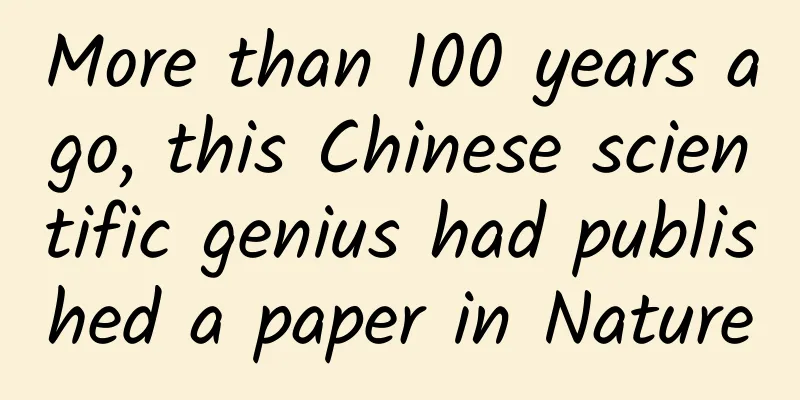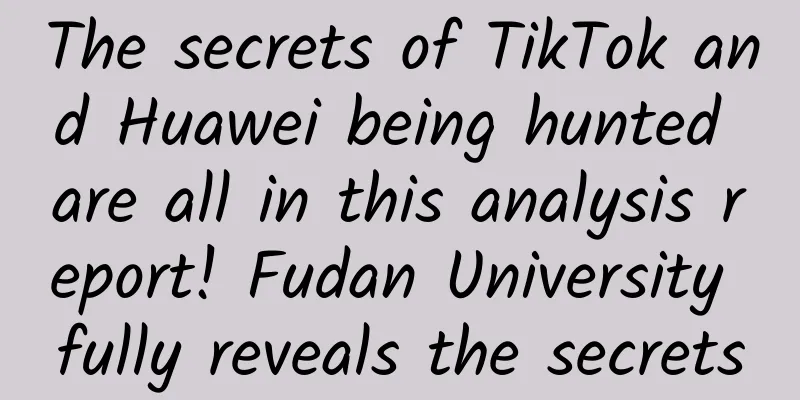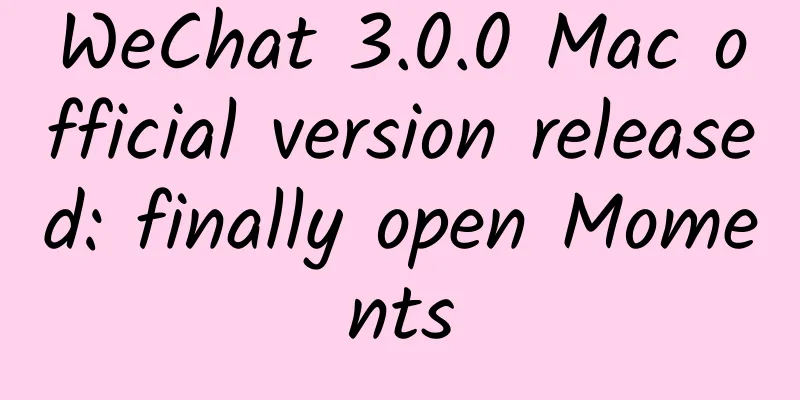More than 100 years ago, this Chinese scientific genius had published a paper in Nature

|
Publishing a paper in Nature is the goal pursued by researchers around the world. Did you know that as early as the late Qing Dynasty more than a hundred years ago, we Chinese had already published a paper in Nature → Written by Li Peng Edited by Liu Zhao New Media Editor/Li Yunfeng Founded in 1869, Nature is the world's oldest international, comprehensive scientific and technological journal. Publishing scientific research papers in it has always been the dream of researchers around the world. Many people probably wouldn't have thought that as early as the late Qing Dynasty more than 100 years ago, we Chinese had already published our first paper in Nature. Who is this Chinese? He is Xu Shou, who enlightened the entire modern science of China. Xu Shou is a scientist and translator. He built China's first steamship and was appointed by Emperor Tongzhi as the "world's best craftsman". He translated the periodic table of elements, founded the first school in modern China to teach science and technology, and published China's first scientific and technological journal... He is not only the curtain caller of traditional Chinese craftsmen, but also the pioneer of modern scientific and technological intellectuals. He is called the "chief designer of science and technology in the late Qing Dynasty." ▲Xu Shou (Photo source/wiki) ••• His habit of verifying things himself led him to a great discovery One day in 1874, Xu Shou, then general manager of the Jiangnan Manufacturing Bureau in Shanghai and a member of the translation committee of the Jiangnan Manufacturing Translation Institute, saw the book "Acoustics" translated by his son Xu Jianyin and British missionary John Fryer. This was a book about acoustics written by John Tyndall, a famous physicist and member of the Royal Society of London, so he casually flipped through it. The translated book "Acoustics" consists of 8 volumes and 2 books, about 80,000 words, and 169 illustrations, which describes in detail the basic theories and experimental contents of acoustics. Xu Shou was a person who liked to ponder and also liked to personally test some scientific and technological knowledge. The book "Acoustics" introduced the principles of sound generation, sound transmission and sound formation, talked about the sound of strings, pipes, bells and chimes, and also talked about the sound produced by friction and vibration. Xu Shou liked music since he was a child. In his spare time, he either played or fiddled with musical instruments. Therefore, this book quickly aroused Xu Shou's interest. When reading the part about pipe sounds on page 214, a law caught Xu Shou's attention: "The number of vibrations of a sound produced by a pipe with or without a bottom is inversely proportional to the length of the pipe within a certain period of time..." That is to say, within a certain period of time, any octave must be twice the number of vibrations when played, so the open pipe must be cut off in half exactly to produce a high octave. Is this really the case? Xu Shou's "old habit" of personally verifying things came back again. He made a 9-inch open copper pipe, blew out a certain tone, and then cut off half of the copper pipe. When he blew it again, he could not blow out a higher octave tone. After many experiments, he found that only by cutting off half an inch of the remaining 4.5-inch copper pipe could he accurately blow out a higher octave tone. This means that the length ratio of the two open pipes with an octave difference is not 2:1, but 9:4. The number of vibrations produced by the sound with or without a bottom pipe is not inversely proportional to the length of the pipe, but is in a ratio of 9: 4. In order to ensure the correctness of his conclusion, he conducted experiments with pipes of different lengths and diameters, and the results were the same. Therefore, he believed that the conclusions of Western research must be wrong. This discovery made Xu Shou very excited, so he wrote it in the paper "Research on the Theory of Temperament" and published it in the 7th issue of the scientific journal "Collection of Science and Technology" in 1880. In the paper, he wrote, "Only the sound from the entity corresponds to the right half, so if the whole is cut in half, the sound still corresponds to the whole. As for the sound from the empty accumulation, the right half does not correspond, so if the tube of the same diameter is cut in half, the sound does not correspond to the whole, and the ratio of nine to four is formed." ▲The Translation Office of the Translation Bureau of the Jiangnan Machinery Manufacturing Bureau, established in 1868 (from right to left: Xu Shou, Hua Hengfang, Xu Jianyin), was a government-run translation and publishing agency in the Qing Dynasty, referred to as the Translation Bureau. It was attached to the Jiangnan Machinery Manufacturing Bureau and was the first government-run institution for translating Western books in modern China (Image source: Visual China) ••• Nature magazine published an article that has been sealed for more than 100 years The Gezhi Huibian is the earliest scientific magazine in modern my country. It was founded in February 1876 at the Gezhi Academy and edited by John Fryer. Lülü is a general term for the music theory of ancient my country. It is a science that studies the composition and application of the musical scale. The study of musical scale is a difficult problem in the study of musical scale. In ancient China, the musical temperament was determined by combining string sounds with pipe sounds, "using strings to determine the temperament and pipes to determine the pitch". The temperament pipe is a standard high-pitched instrument, which has always been given special attention. However, modern physics experiments have shown that the vibration of strings and pipes is different, and the temperament of strings and pipes is different. In the thousands of years of history, traditional Chinese music has not corrected this wrong cognition. Xu Shou has been studying the temperament pipe for decades. Through his own research and the very simple modern scientific experiments at that time, he held a negative attitude towards the theory of combining string sounds with pipe sounds. In his book On the Study of the Lvlü, Xu Shou completely denied the "theory of combining string and pipe" that had lasted for thousands of years in China. He even pointed out that Zhu Zaiyu's conclusion of reducing the inner diameter of the pipe in the Ming Dynasty was "although similar in theory, it was not yet a perfect match." He also believed that the law of pipe sound on page 214 of Acoustics coincided with the traditional Chinese theory of combining string and pipe sound. Therefore, this must be a mistake. After the article was published, Xu Shou consulted with John Fryer again, hoping that he would translate his paper and send it to Tyndall, the author of Acoustics, to explain his experimental conclusions to him. John Fryer agreed to help. On November 25, 1880, the translated paper was successfully sent out. However, in addition to writing a letter to Tyndall about the experiment and the questions raised, John Fryer also sent a copy of Xu Shou's paper to the editorial office of Nature and wrote a letter. Although Xu Shou never waited for Tyndall's reply, after receiving the paper and the letter, Nature magazine changed the title to "Acoustics in China" on March 10, 1881 and published the full text of the article, as well as the editor's note and Dr. Stone's reply. The editor's note says: "From this we can see that the correction of an ancient law by true modern science has surprisingly happened in China. Moreover, this was achieved using the most primitive instruments." Some researchers believe that Xu Shou's successful research in the field of acoustics is the result of the combination of his profound theory and superb experimental technology, thus writing a new chapter in the history of modern Chinese science. ▲STONE, W. Acoustics in China. Nature 23, 448–449 (1881) doi 10.1038/023448a0. The article was published in the “News” column of Nature magazine. According to the authorship rules at the time, the author was the editor of the article, W. Stone. Unfortunately, Xu Shou did not get the news of whether his paper was published in Nature. Existing historical materials and signs show that Xu Shou was unaware of the situation. Many analysts believe that according to common sense and convention, the person who sent the manuscript on behalf of Xu Shou, John Fryer, should have received the journal and royalties for the paper sent from London. But why did John Fryer not inform Xu Shou? This remains an unsolved case. In 1987, Professor Wang Yangzong of the Institute of the History of Natural Sciences of the Chinese Academy of Sciences accidentally discovered Xu Shou's paper "Acoustics in China" published in the British magazine Nature in the National Library (formerly the Beijing Library). It was not until then that the Chinese scientific community learned that more than 100 years ago, Chinese scientist Xu Shou had published a scientific paper in Nature. ••• "Not doing my job properly" but became a scientific genius Xu Shou was born in Wuxi, Jiangsu Province, a hometown of handicrafts, in 1818. He was a very unique person. His road to the imperial examination was not smooth. In the old-style "Tongziju", he did not even pass the examination to become a scholar. Having never achieved fame, he finally gave up and even made a bold statement: "I have tried the Tongziju, but I think it is useless, so I will give it up." The general meaning is: "I have taken the exam for so many years, but I still haven't passed. I have not gained any benefits and have not learned anything practical. I will not study anymore." This does not mean that Xu Shou was decadent. He changed his life and set his sights on the "learning of the world" at that time, which advocated studying and solving practical problems and emphasizing the way to govern the country and benefit the people. Xu Shou came from a poor family. In order to make a living and support his family while studying, he had to farm and do business at the same time, earning some difference by selling grain. Although life was hard, he had more freedom to study after the imperial examination. The books he read expanded from the Four Books and Five Classics to include: The Book of Songs, Tribute to Yu, Spring and Autumn Annals, Book of Han, and Water Classics. Although some books were still about literature and history, his focus had changed. When reading ancient books, he began to consciously list the mountains, rivers, products, geographical features, etc. in the books, and then compared them with modern maps, summarizing many geographical changes from ancient times to the present. Xu Shou's hometown, Wuxi, Jiangsu, has been a land of abundant fish and rice since ancient times. It is also a land of handicrafts, and has a long tradition of craftsmanship. In this atmosphere, he was also very interested in handicrafts. Historical records have recorded his hobby: "When he was young, he liked to work on metalwork, and made many tools by hand." It was also because of this that he later broke away from the ancient mountains and rivers and turned to scientific research with more practical value at the time, such as mathematics, astronomy and calendar, physics, music, medicine, mineralogy, etc. In addition, he also began to study some Western scientific works translated from the Ming Dynasty. Gradually, he had his own understanding of science and technology, and had some basic understanding of the mechanical technology since the Western Industrial Revolution. ▲Books translated by Xu Shou, Xu Jianyin and John Fryer (Image source: wiki) Later, Xu Shou met his lifelong friend Hua Hengfang, who was also a famous mathematician and scientist in modern my country. The two helped each other and went to the Morrison Education Society founded by the London Missionary Society in Shanghai to learn scientific knowledge, and thus met the great scholar Li Shanlan at that time. With the help of Li Shanlan, the two were able to read and buy books on modern Western physics, plants and animals, mineralogy, etc., and also bought related instruments. From then on, Xu Shou began his own physical experiment. In order to learn optics, he could not buy triangular glass, so he ground his crystal seal into a triangle with his bare hands to observe the seven-color spectrum. Xu Shou had a strong curiosity. When others were busy farming and reading essays, he spent all day thinking about strange things. Just like learning optics, he studied theoretical knowledge while conducting some experiments that he could try. "This person is sick and needs treatment!" Some people around him said. However, it was in this way that he initially mastered a lot of important physical knowledge. Later, he mastered some modern chemical knowledge through self-study and experiments. In this way, a "scientific genius" in modern China was born! ••• Homemade steamship, Chinese names for the periodic table In the mid-1860s, Xu Shou began to try to develop a steamship. At that time, the backward late Qing Dynasty did not have any drawings or materials for steam engines. The only thing they could use was a simple diagram of a steam engine in the Western modern science book "New Edition of Natural History". In order to better understand the steam engine, Xu Shou and Hua Hengfang often went to the riverside to observe foreign small steamers, and studied them day and night. Finally, after three months, their research yielded some results - they successfully made China's first steam engine. This is a small steam engine with a cylinder diameter of 1.7 inches and an engine speed of only 240 revolutions per minute. Soon after, Xu Shou and others installed this small steam engine on a wooden boat about 1 meter long, but the experimental effect was not ideal. It stopped after traveling 500 meters. Xu Shou found this result difficult to accept and decided to continue research. After a failure, Xu Shou quickly figured out the cause of the failure and replaced the original steam boiler with a fire tube boiler to solve the problem of insufficient gas supply. Two months later, this "small steamer" finally succeeded in its trial voyage on the Anqing River. After unremitting efforts, China's first steam engine ship was finally successfully developed. The ship has a load capacity of 25 tons, is 17 meters long, and has a displacement of 45 tons. During the trial voyage in the lower reaches of the Yangtze River, the ship traveled 225 miles upstream in less than 14 hours at a speed of about 16 miles per hour; and on the return trip, it took only 8 hours to travel downstream at a speed of about 28 miles per hour. The ship was named "Huang Hu", which was a reference to the phrase "Huang Hu roamed the rivers and seas and drowned in the great swamps" in "Strategies of the Warring States". This marked the beginning of my country's modern shipbuilding industry. ▲The "Huanghu" is the first steam engine ship built in my country's shipbuilding history (Image source: wiki) In 1874, Xu Shou and John Fryer founded the Gezhi Academy in Shanghai and hired some foreign scholars to teach natural sciences. At the same time, he also sought the help of more foreign scholars and translated more than 100 books on natural sciences, most of which were related to Western chemistry. Among them, the first "Chinese and Western Names of Elements Comparison Table" was published in the book "Chemical Principles". At that time, a total of 63 Chinese names of chemical elements were introduced, 51 of which were created by Xu Shou, and 36 are still in use today. More than a century has passed since Xu Shou named the periodic table in Chinese, and the number of chemical elements has increased from more than 60 to about 100. However, the Chinese names of newly discovered elements still generally follow the principles used by Xu Shou. Xu Shou is therefore known as the "Father of Modern Chinese Chemistry." References: 1. "Xu Shou, the last Chinese craftsman and the pioneer of modern scientific and technological intellectuals, the first Chinese to publish a paper in Nature". Xinhua Daily Telegraph. 2019-06-25 https://m.sohu.com/a/322742802_723051/ 2. "How did Xu Shou build China's first motorized warship with his bare hands during the dark days of the late Qing Dynasty?" Tencent.com https://new.qq.com/omn/20200314/20200314A0DQ5O00.html 3. "Why Xu Shou was praised as the "first skilled craftsman" in the late Qing Dynasty". Zhu Yafu. Shaanxi Workers' Daily. 2018-05-29 4. "Xu Shou's 1881 paper: Acoustics in China". Xu Hong, Xu Fuzhang, Bao Zhengyi. 2012-09-28 http://www.shtong.gov.cn/node2/n189673/n86869/n87136/n87138/u1ai131009.html Produced by: Science Central Kitchen Produced by: Beijing Science and Technology News | Beijing Science and Technology Media Welcome to share to your circle of friends Reproduction without authorization is prohibited |
Recommend
GPS has hidden secrets. See how an experienced driver finds the person and the shooting location through a few revealing photos
I sincerely ask everyone to stop asking for seeds!...
Four channels for APP to recall users: EDM, Push, SMS, and public account
The author of this article will share with you ho...
It's outrageous: I'm 165cm tall and weigh 80kg, but I have fatty liver...
During the physical examination at the end of the...
Nine suggestions that new APP developers must accept
[[154784]] With the continuous rise of a series o...
Liangzhi Academy teacher Lao Piaopiao: A complete guide to creative synthesis from concepts to techniques
Liangzhi Academy Teacher Lao Piaopiao: A Complete...
Silicon Valley Guide: How to systematically improve user retention?
Pinterest is one of the most popular social platf...
Detailed explanation of Tik Tok recommendation mechanism!
No matter where you are, if you want to make mone...
App promotion: 8 unspoken rules of app operation
Before starting my own media business, I worked a...
How to make https certificate and HTTPS?
1. Why must we upgrade to HTTPS? The HTTP protoco...
How to quickly build a marketing and promotion system for 2B products
In the past two years, the SAAS product market ha...
Chinese technology is hidden under the turf of the Qatar World Cup
"How does it feel to kick?" On the even...
If you don’t understand a little bit of "Dream of the Red Chamber", you won’t be able to understand the college entrance examination essay!
Mixed Knowledge Specially designed to cure confus...
Private tips on how to place game information streams, told to you for free!
Before reading this article, we need to have a co...
How do keywords leverage big accounts? Point 5 is the most important!
During the just-passed Double 11, traffic and con...
Analyze the live broadcast process from 0 to 1!
According to the survey data of [2021 China's...









